
Environnement Risques & Sante
Scope & Guideline
Innovating Solutions for Environmental Health Challenges
Introduction
Aims and Scopes
- Environmental Health Research:
The journal emphasizes studies that explore the impact of environmental factors, such as air quality, chemical exposures, and pollutants, on human health, particularly in vulnerable populations. - Risk Assessment Methodologies:
It promotes innovative methodologies for assessing risks associated with environmental exposures, including the development of indicators and models to evaluate health impacts. - Interdisciplinary Approaches:
The journal encourages interdisciplinary research that integrates perspectives from public health, environmental science, sociology, and policy-making to address complex health-environment interactions. - Policy Guidance and Advocacy:
Research published in the journal often aims to inform and guide public health policies, with a focus on translating scientific findings into actionable recommendations for stakeholders. - Community Engagement and Citizen Science:
There is a consistent focus on involving communities and stakeholders in environmental health research, promoting citizen science as a means to enhance public understanding and participation.
Trending and Emerging
- Climate Change and Health Interactions:
There is a significant increase in studies examining the interconnections between climate change and health, highlighting the need for adaptive strategies in public health to mitigate the impacts of climate-related risks. - One Health Approach:
The 'One Health' perspective is gaining traction, with research emphasizing the interconnectedness of human, animal, and environmental health, particularly in the context of zoonotic diseases and ecosystem health. - Emerging Contaminants and Microplastics:
Research on emerging contaminants, including microplastics and their health implications, is becoming a prominent focus, reflecting growing public and scientific concern about these pollutants. - Social Determinants of Health:
There is an increasing emphasis on the social determinants of health and their relationship with environmental factors, acknowledging how socio-economic status, education, and community engagement influence health outcomes. - Mental Health and Environmental Stressors:
The exploration of mental health in relation to environmental stressors, such as pollution and climate anxiety, is emerging as a critical area of research, recognizing the psychological impacts of environmental degradation.
Declining or Waning
- Historical Perspectives on Environmental Issues:
Research focusing solely on historical analyses of past environmental health issues seems to be less prevalent, as the journal shifts towards more contemporary challenges and solutions. - Narrowly Defined Chemical Exposures:
There is a noticeable decrease in studies that address specific chemical exposures in isolation, as the journal increasingly favors research that examines the cumulative and interactive effects of multiple exposures. - Conventional Risk Communication Strategies:
Traditional approaches to risk communication are fading, giving way to more innovative and community-based methods that engage the public in dialogue and participatory decision-making. - Single-Disease Focus Studies:
The trend of publishing research that concentrates on a single disease outcome is declining, with a growing emphasis on understanding the broader impacts of environmental factors on multi-morbidity and overall health.
Similar Journals
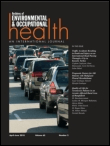
Archives of Environmental & Occupational Health
Innovating solutions for environmental and occupational challenges.Archives of Environmental & Occupational Health is a prestigious journal published by Routledge Journals, Taylor & Francis Ltd, dedicated to advancing research and knowledge in the realms of environmental science, occupational health, and toxicology. With an ISSN of 1933-8244 and an E-ISSN of 2154-4700, this peer-reviewed journal has gained significant recognition, currently holding a Q2 ranking in Environmental Science and Q3 rankings in Health, Toxicology and Mutagenesis, and Public Health. Established in 2005, it serves as a vital platform for researchers, practitioners, and policymakers alike who aim to address and disseminate findings on pressing environmental and occupational health issues. The journal is not open access, allowing for rigorous peer review processes while still reaching a broad readership. As it converges through 2024, the Archives of Environmental & Occupational Health continues to play a critical role in shaping discourse and fostering innovation in the field, making it an essential resource for those committed to improving both human health and the environment.

Environmental Epidemiology
Advancing knowledge at the intersection of environment and health.Environmental Epidemiology is a leading open-access journal published by Lippincott Williams & Wilkins, dedicated to advancing the field of environmental and public health research. Since its establishment in 2017, this journal has emerged as a vital platform for scholars and practitioners interested in the intricate relationships between environmental factors and health outcomes. With an impressive impact factor reflecting its rigorous peer-review process and a robust Scopus ranking—notably holding Q1 positions in categories such as Health, Toxicology and Mutagenesis, and Public Health—this journal is essential for those seeking to explore the latest findings and methodological advances in environmental epidemiology. Open access since 2018, it ensures wide dissemination of research findings, promoting accessibility and engagement among a global audience of researchers, policymakers, and students. As it continues to converge through 2024, Environmental Epidemiology remains committed to publishing high-quality articles that address pressing environmental health challenges, fostering interdisciplinary collaboration and knowledge sharing that is crucial for developing effective public health interventions.
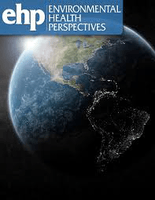
ENVIRONMENTAL HEALTH PERSPECTIVES
Connecting communities with impactful environmental health findings.Environmental Health Perspectives (EHP) is a premier open-access journal published by the U.S. Department of Health and Human Services, Public Health Science, dedicated to publishing rigorous and impactful research in the field of environmental health. Since its inception in 1972, EHP has become a leading platform for disseminating knowledge on the interactions between the environment and human health, making significant contributions to the fields of toxicology and public health. With an impressive impact factor and a Q1 ranking in both Health, Toxicology and Mutagenesis and Public Health, Environmental and Occupational Health categories, EHP ranks among the top journals globally, reflecting its high citation and visibility within the academic community. Researchers, professionals, and students alike will find a wealth of vital information within its pages, as EHP covers a wide array of topics related to environmental exposures, health outcomes, and policy implications. Furthermore, EHP engages with a global audience through its commitment to open access, ensuring that critical research is available to all, enhancing the collective understanding of environmental health issues since 1972.

Revista de Salud Ambiental
Innovative Insights for a Healthier PlanetRevista de Salud Ambiental is a prestigious scientific journal dedicated to advancing knowledge in the field of environmental health. Published by the SOC ESPANOLA SANIDAD AMBIENTAL, this Open Access journal has been providing free access to its articles since 2001, ensuring that critical research on environmental influences on public health is widely available to researchers, professionals, and students worldwide. With an ISSN of 1577-9572 and E-ISSN 1697-2791, the journal covers a broad range of topics including environmental toxins, pollution management, and sustainable public health practices. Its commitment to high-quality research is reflected in its rigorous peer-review process, aiming to drive significant advancements in environmental health science. By promoting interdisciplinary collaboration and dissemination of impactful research, Revista de Salud Ambiental plays a vital role in shaping environmental health policies and practices, making it an essential resource for anyone invested in the future of public health.
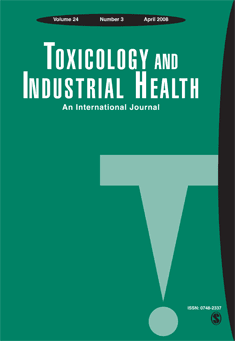
TOXICOLOGY AND INDUSTRIAL HEALTH
Advancing knowledge in toxicology for a safer industrial future.TOXICOLOGY AND INDUSTRIAL HEALTH, published by SAGE PUBLICATIONS INC, is a premier journal in the field of toxicology, public health, and environmental health, with a significant history dating back to 1985. With its ISSN 0748-2337 and E-ISSN 1477-0393, the journal provides a platform for disseminating groundbreaking research and comprehensive reviews that address the complexities of toxic substances in industrial and occupational settings. Despite its Q3 ranking among peers in health, toxicology, and public health, this journal is becoming increasingly influential, reflected in its growing citation metrics. Researchers and professionals benefit from its commitment to fostering knowledge in both theoretical and practical contexts, making it an essential resource for those dedicated to advancing understanding in this vital field. The journal's main objectives include promoting research addressing the implications of toxicology on health and safety standards across industries, ensuring accessibility to current studies for a global audience. Overall, TOXICOLOGY AND INDUSTRIAL HEALTH plays a critical role in bridging the gap between research and real-world applications, proving invaluable to students, professionals, and researchers alike in their pursuit of enhancing public health and environmental safety.
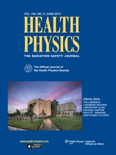
HEALTH PHYSICS
Connecting Scholars for a Safer TomorrowHEALTH PHYSICS is a leading academic journal dedicated to the study and dissemination of knowledge in the fields of radiology, epidemiology, and health toxicology. Published by Lippincott Williams & Wilkins, this esteemed journal has been a cornerstone of research since its inception in 1958, and it continues to foster important discussions and advancements in the discipline. With a notable impact factor and consistently ranking in the Q2 and Q3 quartiles across various categories in 2023, HEALTH PHYSICS serves as a vital resource for scholars, practitioners, and students seeking the latest insights and methodologies in the management of radiation exposure and its health implications. While the journal does not offer open access, it remains a critical platform for peer-reviewed articles that contribute to public health and environmental safety. The journal's comprehensive scope and historical significance underscore its importance in advancing knowledge and practices within its field, making it an essential read for anyone engaged in the multidisciplinary realms of health physics.
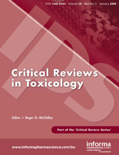
CRITICAL REVIEWS IN TOXICOLOGY
Unveiling Innovations in Toxicological ResearchCRITICAL REVIEWS IN TOXICOLOGY, published by Taylor & Francis Ltd, stands as a preeminent journal within the field of toxicology, boasting an impressive Q1 ranking and holding the distinction of being ranked 12th out of 133 in the toxicology category according to Scopus, placing it in the top 91st percentile. With a continuous publication history since 1971 and a commitment to providing high-quality reviews, the journal offers critical insight into the latest research and advancements in toxicological sciences. While it is not an open-access journal, it provides numerous access options for both subscribers and institutions, ensuring that its extensive articles are widely available to the academic community. The journal's objectives are to disseminate comprehensive reviews that foster understanding and innovation in the assessment of chemical risks, environmental impacts, and the mechanisms of toxicity, making it an invaluable resource for researchers, professionals, and students dedicated to the science of toxicology.

Environmental Science & Technology Letters
Driving excellence in environmental science and technology.Environmental Science & Technology Letters, published by the American Chemical Society, stands as a premier journal in the realm of environmental science and technology, focusing on pivotal studies that address pressing environmental challenges. With an impressive Q1 ranking in multiple categories including Ecology, Environmental Chemistry, and Pollution, this journal maintains a position of excellence within its field, achieving Scopus ranks that place it in the top percentile of Environmental Science disciplines. Although not open access, Environmental Science & Technology Letters offers vital insights and cutting-edge research that contribute significantly to the understanding and management of environmental issues. The journal’s objectives include disseminating ground-breaking findings and promoting discussions that lead to sustainable solutions. With convergence from 2013 to 2024, it continues to serve as an essential resource for researchers, professionals, and students committed to advancing knowledge and innovation in environmental science.

Current Environmental Health Reports
Driving impactful dialogue on environmental health policies.Current Environmental Health Reports, published by SpringerNature, is a leading journal dedicated to advancing research in the multifaceted domains of environmental health. With an impressive impact factor and a distinguished Q1 ranking in several categories—such as Health, Toxicology and Mutagenesis, Public Health, and Environmental Science—this journal provides a premier platform for scholars, researchers, and professionals to disseminate their findings. Since its inception in 2014, it has showcased critical studies that address pressing environmental issues, health risks, and regulatory frameworks, guided by a commitment to high-quality research and policy dialogue. Whether through original research articles, reviews, or policy perspectives, Current Environmental Health Reports strives to inform and influence practice and public policy in environmental health, making it an essential resource for those engaged in this vital field. Accessible only through institutional subscriptions, the journal continues to illuminate the interplay between environmental factors and human health through innovative and impactful scholarship.
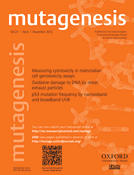
MUTAGENESIS
Transforming the future of genetics and health through innovative research.MUTAGENESIS, published by Oxford University Press, is a leading journal in the fields of genetics, toxicology, and health, dedicated to advancing our understanding of mutagenic processes and their implications for human health. With an ISSN of 0267-8357 and an E-ISSN of 1464-3804, this journal has been at the forefront of mutagenesis research since its inception in 1986 and will continue to publish cutting-edge studies until 2024. Holding an impressive position in the academic community, MUTAGENESIS is ranked Q2 in Genetics, Q2 in Clinical Genetics, Q2 in Health, Toxicology, and Mutagenesis, and Q1 in Toxicology, reflecting its commitment to high-quality scholarly work. The journal enjoys a robust global readership, with significant rankings in various Scopus categories, including top positions in Environmental Science and Clinical Genetics, ensuring that it remains a vital resource for researchers, professionals, and students alike. While access to its articles is not completely open, MUTAGENESIS provides valuable insights that fuel innovative research and drive forward the understanding of genetic risks and toxicological assessments.